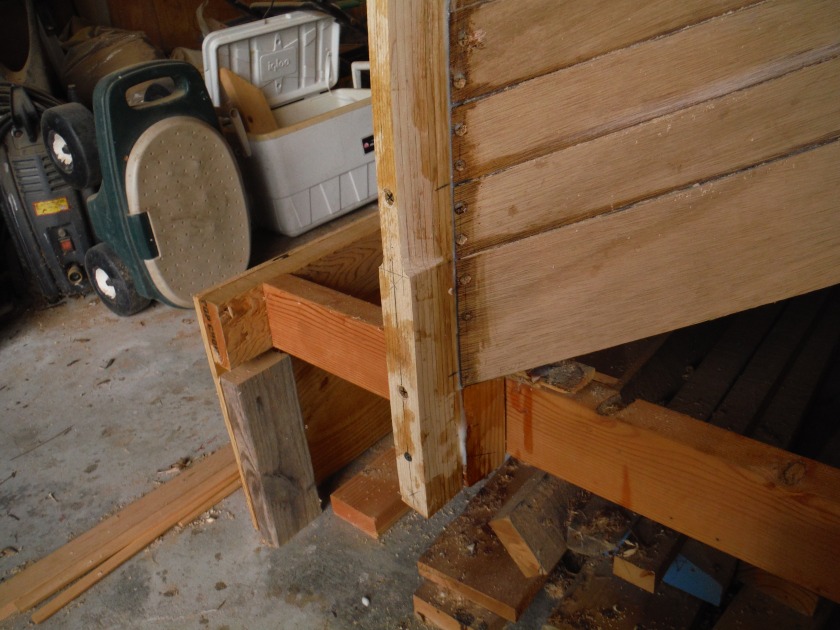After the sheer strakes were hung, progress on Tammie Norrie slowed down to a crawl. Other priorities kept getting in the way, including a boat show. But our next task is to shape and install the outer stem (sometimes called the stem facing) and the keel.
The outer stem was made back in January, and has been sitting patiently waiting to be used. It was laminated out of multiple layers of 1/4″ ash. Ash can take a pretty severe bend when soaked it water, which makes it ideal for laminating. It’s also tough, so should be able to resist some of the inevitable dings the boat will see.
I mentioned in a previous post that boatbuilders developed their own vocabulary, presumably for the purpose of confusing cabinet makers. Here’s another example. Boat parts do not have a width and thickness; they have a sided dimension and a molded dimension. On the outer stem, the sided dimension is the width of the stem when looking from the front; the molded dimension is the thickness of the stem when viewed from the side. When I made the outer stem, the laminations were bent around a mold; that’s how I remember which dimension was molded versus sided.

Intentionally, the outer stem was built with the sided dimension a little fat. Now that it’s on the boat, we can mark the width it needs to be to cover the edges of the strakes. Running the stem through the thickness planer made short work of this part of the job.

On Tammie Norrie, the molded dimension is not constant; it is thickest at the bow and tapers as it meets the keel. This still needs a little more work, the shadows in the photo show that the curve is not quite smooth.

Finally the outer stem is shaped. Throughout most of the stem, the cross section is trapezoidal; I left a flat of 7/8″ on the front of the stem. This will be wide enough for a half-oval brass strip which will run down the length of the stem and along the keel. But where the stem was adjacent to the sheer strake, I left the stem rectangular, in deference to Rule #3. The top of the stem projects well past the sheer; I’ll trim it to length and give it some sort of decorative shape later.
After all the work on the outer stem, shaping the keel is much simpler. The keel consists of several pieces of straight stock, beveled on each side to give a trapezoidal section. The keel is made from douglas fir, which is the same material I used on the skeg. Fir is much softer than ash, so using hand tools to shape the keel was a joy. It generated lots of nice shavings, some of which found their way into the wife’s car. I don’t know how that happened.

The “keel” joins the outer stem and runs to the forward edge of the centerboard slot; a piece either side of the slot connects the keel to the end of the skeg which runs to the aft edge of the slot. When installing the outer stem and the keel, I used a belt and suspenders approach: the pieces are epoxied to the hull, but also held with silicon-bronze screws.

She’s a lookin good my man !
LikeLike